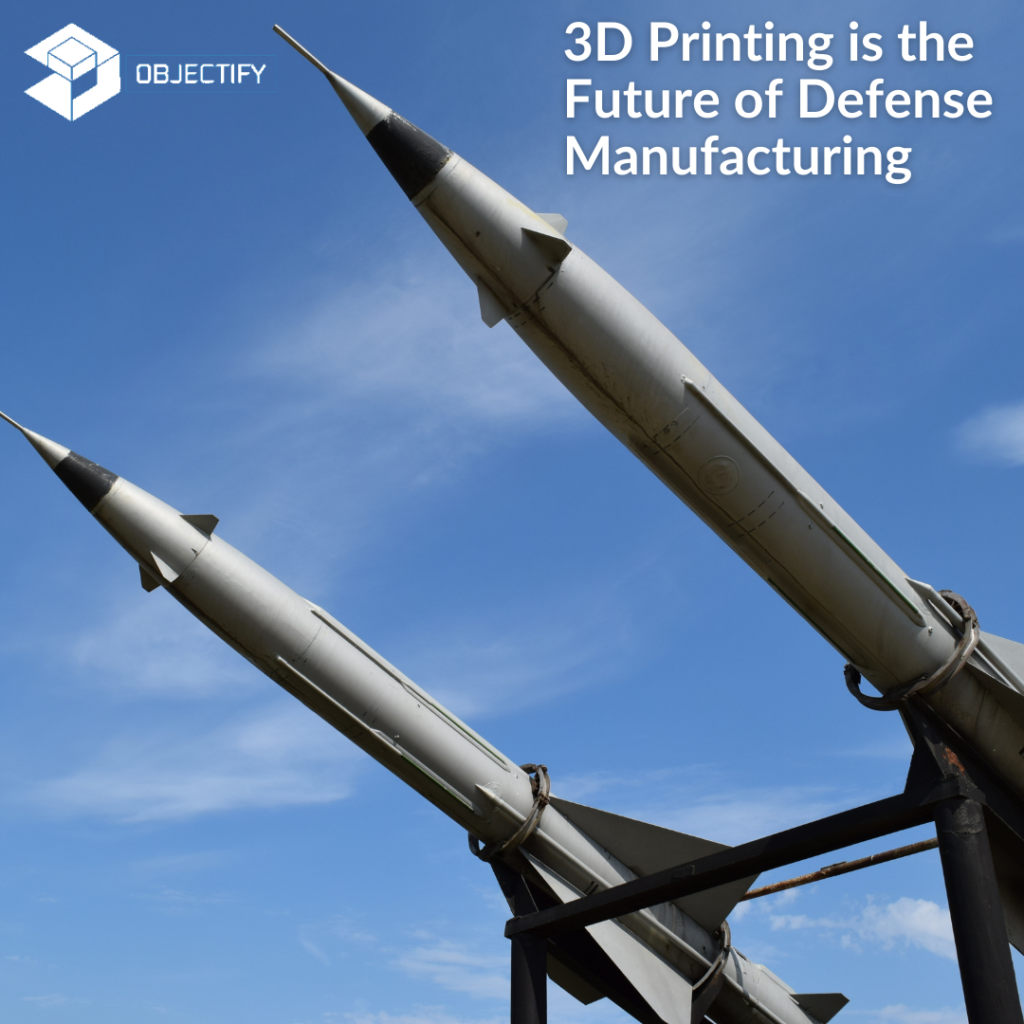
3D Printing is the Future of Defense Manufacturing
3D Printing or Additive Manufacturing or Rapid Manufacturing is an exponentially growing technology. It is the process of creating an object by building it layer by layer from a CAD model or a digital 3D model. Additive Manufacturing in aerospace is booming, from using it to make rocket shells, rocket engines and even parts of Astronaut’s Uniform.
With the introduction of Additive Manufacturing in the defense sector, the production of bullets, parts of pistols, guns, tanks, ships, bunkers, storage houses and other equipment would be made easy, faster and cost effective. The efficiency and production quality will increase drastically.
Material Cost Reduction
Materials used in creating weapons, armors, and other equipment in defense are mostly titanium, aluminum, steel, copper; which are pretty expensive. AM is very resource efficient which helps in reducing cost when high value materials are used.
Accessibility
3D printing is easy to set up (a 3D printer can be set up anywhere with a power source and with required raw materials), it can be used in ships and in other remote areas where traditional construction is challenging due to harsh weather conditions and short supply of labor due to threat from hostile neighbors; to create and supply spare parts without any delay. Thus, eliminating additional transport costs and unavailability of parts. The data or the blueprint of the part can be sent to the ship or any remote place and within a few hours the required part can be created with just a push of a ‘print’ button. A fabrication lab can be set up near a base so as to ensure easy supply of any required equipment.
The Indian army has constructed 3D printed houses for soldiers in Gujarat. According to ANI, Military Engineering Services (MES) using 3D rapid construction technology constructed two fully 3D concrete printed, modern-day dwelling units with green building concepts in only four weeks. It can also be used to build storage houses for military vehicles and equipment.
Lighter the Better
3D Printing military weapons can be modified using topology optimization; it is a process which maximizes the performance of the system using a minimum amount of materials that would help in creating more stable and rigid parts while reducing a lot of weight, thus ensuring more mobility, handling and speed.
Rapid Prototyping
Creating models and Prototypes is easier, faster and more accurate using AM, as production time is comparatively less and it is easier to alter or edit any changes if needed. Thus, allowing multiple iterations or new innovations of a model or a prototype at much faster and at a much lower cost than the existing conventional methods.
Security and Surveillance
Drones have a leading role in counterterrorism and counterinsurgency, and are to be of growing importance in future military operations. With the introduction of AM in defense, the production of drones can be increased drastically. The maintenance will be easier too, as creating spare parts for drones is a lot easier, faster and cheaper using 3D Printing.
3D Printing in Airforce
US is using Metal additive manufacturing to produce oil lubrication system parts for the GE F110 engine, which powers the Air Force’s F-16 jet fighter.
Often many aircrafts are created decades back and it is very hard to maintain and find the spare parts of such aircrafts. 3D Printing will help in creating new and modified spare parts for the old bombers and other aircrafts. Thus, allowing the reuse of old equipment and aircrafts.
Challenges Faced
A small part if dysfunctional can render a weapon or a system useless. That can be avoided by using a fabrication lab which would ensure supply of the spare part immediately when needed.
Transmitting part files directly to connected 3D printers anywhere is an essential readiness element that additive manufacturing offers. Keeping those files out of the hands of the enemy is a challenge the military hopes to solve with blockchain. Thus, a secure line is to be established for communications and exchange of information.
If the packaging items, bullet casings, etc. could be converted into the raw materials required for AM then it would open up a lot more possibilities as it would be easy to recycle such materials, and it would be a good source for 3D printing raw materials.
To Conclude
3D Printing / Additive Manufacturing / Rapid Manufacturing has a lot of potential in the defense sector. This technology can be used in creating and modifying weapons and its accessories, also in maintenance of weapons, creating spare parts. And in creating new 3D printing Military weapons and equipment with faster and better construction.


